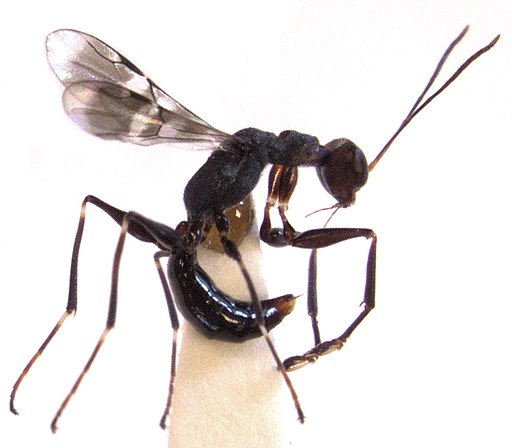 |
| Adult Lanternfly with coloring and spots |
SLF are native to certain areas of China, India, and Vietnam. In these areas, populations of Spotted Lanternflies are kept in check with natural SLF predators such as a type of wasp known Dryinus browni. Another type of parasitic wasp known as Anastatus orientalis has been observed to destroy a large number of Spotted Lanternfly eggs.
Unfortunately, there are many areas outside these regions that do not have a species known to feed on Spotted Lanternflies. Without a natural predator, the lanternflies can grow and spread unchecked in an environment that doesn't know to consume it, thus becoming an invasive species. It has been found as an invasive species as far back as 2004 when SLF were discovered invading Korea. In three years time, the entire country of South Korea had evidence of Spotted Lanternfly infestations. Only a few years later it was found in Japan as an invasive species as well.
How Did Spotted Lanternflies get to the US?
 |
| Berks County -- Ground Zero for the North American SLF infestation |
known to be SLF egg masses. In 2014, the first infestation was discovered in the same general area.
Why are Spotted Lanternflies Bad?
Spotted Lanternflies wreak havoc on the ecosystem. Since
they have no current predators in the areas in which they are invasive species
they can live, grow, and multiply freely without being killed by most other
wildlife. The SLFs red coloring in their more mature stages acts as a ‘Hey don’t
eat me, I could be poisonous’ signal to potential predators.
Spotted Lanternflies damage or destroy crops, vegetation, leafy
plants, trees, vines, hops, and other plants. Damage is inflicted during
feeding from their numerous bites which can pierce and suck on the plant to
attain food. Feeding damage may cause dieback
 |
| Sooty Mold growing at the base of a Tree-of-Heaven |
 |
| Leaves of a Broccoli plant with Black Sooty Mold causing it to die |
Honeydew may also attract other bugs to the area and create additional nuisances. Ants, bees, and wasps are noticeably more numerous where Lanternfly honeydew tends to drop.
 |
| A trifecta of Spotted Lanternflies, Yellowjacket Wasp, and Egg Mass (left) on a tree in late October. The wasp is attracted to the tree from the Lanternfly honeydew. |
Spotted Lanternflies also preferentially feed on the Tree-Of-Heaven, which produces toxic metabolites. These toxins don't affect the SLFs, but do affect others in the environment. These toxins help keep any potential predators away from the tree, and thus away from the lanternflies. Lanternflies will set up shop in many areas, though, if there are no Tree of Heaven growths anywhere, they seem to gravitate towards high sugar content plants, explaining their affinity towards grapes and why vineyards need to be especially vigilant.
Spotted lanternflies can have a significant economic impact on agricultural industries, particularly those that rely on grape and fruit production. They can reduce crop yields and increase the cost of production, ultimately affecting the livelihoods of farmers and producers.
Spotted Lanternflies can also be a public health concern, as they have been known to swarm and cause traffic hazards, and can also pose a risk to people who are allergic to their saliva.
Here are some additional reasons why spotted lanternflies are considered to be bad:
- Spreading diseases: Spotted lanternflies are known to spread plant diseases such as grapevine leafroll disease and Pierce's disease, which can be devastating to crops and vineyards.
- Environmental damage: The spotted lanternfly can cause significant environmental damage by feeding on trees, which can lead to defoliation and weakening of the trees. This can also affect the habitat of wildlife and contribute to erosion and other environmental problems.
- Increased use of pesticides: The control of spotted lanternflies often involves the use of pesticides, which can have negative impacts on the environment and human health. The use of pesticides can also lead to the development of pesticide-resistant strains of insects, making control more difficult in the long-term.
- Increased costs: Controlling spotted lanternflies can be expensive, both for farmers and for the government. The cost of monitoring and controlling these pests can be substantial, and can ultimately impact consumers through higher prices for produce and other agricultural products.







